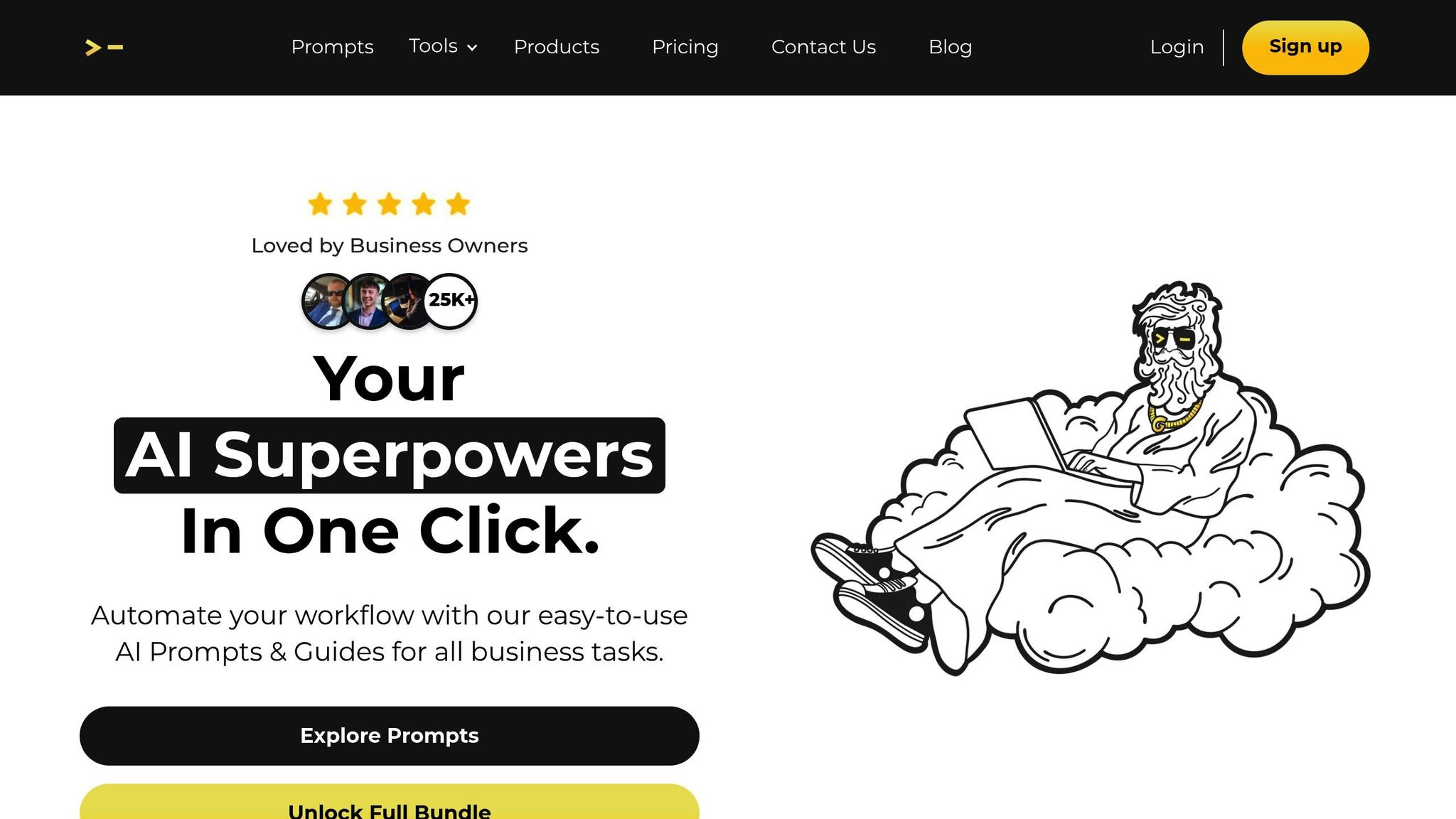
Outdated data cripples GPT models. Without regular updates, AI models lose accuracy, trust, and usefulness - especially in fast-moving industries like finance, healthcare, and technology. Updated industry data ensures GPTs stay relevant, reliable, and effective for tasks like market predictions, medical recommendations, and consumer insights.
Keeping GPT models updated isn’t optional - it’s a business necessity to maintain accuracy and ROI.

Recent research highlights how keeping industry data up-to-date significantly improves GPT performance across various sectors. Here's a closer look at how fresh data drives better outcomes and the risks associated with outdated information.
In fields like finance, healthcare, and technology, using the latest data leads to more accurate predictions, safer recommendations, and improved efficiency:
By leveraging updated data, these models also improve response efficiency through better pattern recognition, reducing errors and enhancing overall performance.
Using outdated or incomplete data can have serious consequences:
Over time, relying on outdated data compounds inaccuracies, further degrading model performance and requiring more human intervention to correct mistakes.
Large-scale studies provide measurable insights into the importance of data freshness. Organizations that regularly update their datasets report higher accuracy and relevance in AI-generated responses, as confirmed by industry professionals. Additionally, maintaining current data reduces costs by minimizing the need for manual verification.
These findings highlight the critical role of updated industry data in maximizing GPT model performance. For businesses relying on AI for insights, regular data updates aren't just a best practice - they're essential for staying competitive.
Keeping GPT models up to date with industry-specific information is no small task. It requires a mix of speed and precision to ensure the AI remains relevant and effective as industries evolve. Here’s how organizations can tackle this challenge.
There are several strategies for updating GPT models, each with its own strengths:
Once you’ve selected a method, the next step is ensuring the data itself is accurate and relevant.
Choosing the right data is critical. Here’s how organizations can ensure their updates improve model performance:
Once the data is validated, prompt engineering can help fine-tune how the model uses this information.
Prompt engineering is a powerful way to integrate new information without retraining the entire model. Here are some effective techniques:
Tools like God of Prompt offer ready-made industry-specific prompt collections, making it easier to integrate new data efficiently. These resources save time and effort while maintaining high performance.
Finally, don’t forget to implement feedback loops. By monitoring how prompts perform with evolving data, teams can refine their strategies and improve results over time. This iterative process ensures your domain-specific GPTs stay sharp and relevant.
Recent data reveals that the effect of updated information on GPT performance varies widely across industries. Each sector faces its own unique challenges, from navigating regulatory requirements to adapting to technological advancements. These differences create an interesting landscape for comparing how updated data influences performance.
Fast-changing industries like technology and finance benefit significantly from frequent data updates, showing notable improvements in accuracy and relevance. On the other hand, sectors with slower rates of change, such as healthcare and manufacturing, experience more moderate gains.
In healthcare, updated clinical studies contribute to better decision-making, though strict validation processes can slow implementation. Manufacturing sees benefits from process improvements, but the pace of change in this sector tends to be steadier, making updates less frequent but still impactful.
Let’s take a closer look at how these updates play out in specific industries:
Each of these examples highlights how updated data can drive meaningful improvements, tailored to the unique demands of different industries.
Updating GPT models with the latest industry data can seem challenging, but the right tools and strategies make it much more manageable. The goal is to use resources that not only provide current information but also help structure and apply that data effectively. With the right approach, these tools can integrate seamlessly into existing workflows, ensuring consistent improvements in GPT performance.

For businesses aiming to optimize their GPT models with up-to-date industry data, God of Prompt is a standout resource. This platform offers a massive library of over 30,000 AI prompts, guides, and toolkits tailored for tools like ChatGPT, Claude, Midjourney, and Gemini AI. These resources are designed to help businesses adapt their GPT models to meet changing industry needs.
What sets God of Prompt apart is its focus on prompt engineering. Instead of starting from scratch every time industry data changes, users can tap into categorized prompt bundles that have already been tested and refined. This approach bridges the gap between raw data and practical GPT applications, making updates smoother and more reliable.
Another key feature is the platform's commitment to lifetime updates. This means businesses don’t have to constantly search for new tools or rebuild their prompt libraries. As industries evolve and new data becomes available, the platform keeps its resources current, saving time and effort for users.
Organized prompt collections are a game-changer when it comes to efficiently updating GPT models. God of Prompt’s categorized prompts cover essential areas like marketing, SEO, productivity, and no-code automation. This structure allows teams to quickly find and implement prompts that align with their specific needs, cutting down on time spent searching for solutions.
The platform also includes how-to guides that offer step-by-step instructions for adapting prompts to new industry data. These guides are based on proven methodologies, making it easier for users to integrate updates effectively.
Additionally, access through Notion provides tools for version control and prompt tracking. This makes it simple to monitor which prompts work best with specific data updates, ensuring a more streamlined process.
For organizations managing multiple GPT implementations, the Complete AI Bundle is a cost-effective option. Priced at $150.00, it includes access to all 30,000+ prompts and supports unlimited custom prompt creation. This makes it especially valuable for businesses that frequently update GPT models across various departments or industry sectors.
Effective GPT updates require more than just new data - they need structured frameworks for implementation. God of Prompt’s custom GPTs toolkit provides these frameworks, enabling businesses to standardize how they incorporate updates into their models.
The platform’s prompt engineering guides are particularly helpful for evaluating and validating new industry data before integration. Not all data leads to better performance, so these guides help identify high-value sources and structure prompts to maximize their impact.
God of Prompt also supports multiple AI platforms, including ChatGPT, Claude, Midjourney, and Gemini AI, allowing teams to apply consistent methodologies across different tools. This eliminates the hassle of maintaining separate resource libraries for each platform.
For businesses in specialized industries, the platform offers a 7-day money-back guarantee, giving them the chance to test the resources with their specific data and terminology before committing. This ensures that the tools can meet the unique demands of their sector.
Regular updates to the platform ensure that its resources and methodologies keep pace with advancements in AI and shifting industry standards. This ongoing development helps businesses maintain strong GPT performance, even as their data and AI capabilities evolve.
The success of GPT models heavily relies on fresh and well-curated industry data. Without regular updates, static GPT models can quickly lose their effectiveness.
Research shows that keeping data current and validating it thoroughly enhances GPT model accuracy. Even small improvements in data quality can lead to noticeable performance boosts. At the same time, consistent monitoring and timely feedback are key to addressing model drift before it becomes a problem.
High-quality data matters most. A diverse set of training data not only improves model performance but also leads to better outcomes for businesses. Establishing feedback loops allows models to adapt quickly to new information and real-world demands. Ethical concerns, like reducing bias and maintaining transparency, are equally critical for building trust in customer-facing applications. These principles highlight the need for businesses to act decisively.
To stay ahead, organizations should focus on continuous performance monitoring to catch and address drift early. Regularly updating data and knowledge bases is vital - this means sourcing, cleaning, and validating data rigorously to ensure quality and diversity.
Tools like God of Prompt can help streamline this process. With over 30,000 curated prompts, categorized bundles, and detailed guides, it offers practical solutions for integrating new industry data. For instance, the Complete AI Bundle, priced at $150.00, provides resources to manage GPT implementations across multiple departments effectively.
Incorporating user feedback and conducting regular audits for ethical compliance are also crucial. This includes identifying and addressing bias while ensuring privacy standards are upheld throughout the data update process.
Ultimately, businesses that prioritize ongoing updates and active management of their GPT models will gain a competitive edge. On the other hand, treating these models as static tools risks declining performance and missed opportunities in an ever-evolving landscape.
To keep GPT models accurate and dependable, businesses need to focus on using top-notch datasets that reflect real-world scenarios. These datasets should be both diverse and representative to capture the nuances of the tasks they’re meant to handle. Alongside this, setting up rigorous validation processes and well-defined evaluation standards is key to maintaining data integrity.
Frequent updates and retraining are also crucial. This keeps the models in sync with changing industry trends and ensures they remain relevant. Breaking down complex tasks into smaller, more manageable pieces can further enhance their performance. Additionally, cross-referencing important information with trusted external sources adds an extra layer of reliability, ensuring the outputs are as accurate as possible.
If businesses neglect to refresh their GPT models with up-to-date industry data, they risk the models becoming less precise, less relevant, and more prone to mistakes or security issues. As time goes on, outdated models may produce incorrect results, falter in real-time applications, and even make logical errors or generate misleading information.
On top of that, older models are more vulnerable to security threats, like prompt leaks or phishing attacks. Consistent updates not only keep GPT models accurate and dependable but also ensure they stay aligned with shifting business demands. This approach helps organizations maintain a competitive edge while reducing potential risks.
Prompt engineering is essential for guiding GPT models to keep pace with changing industry data. By creating precise, context-aware inputs, it helps ensure the model produces outputs that are both accurate and relevant to specific situations. Adjusting prompts to reflect new data patterns reduces mistakes and improves the model's ability to respond to shifts in user demands or industry updates.
On top of that, techniques like structured prompts and adaptive designs simplify workflows. They cut down on manual work while boosting overall performance, making prompt engineering a powerful approach for maintaining reliable outputs as industries and datasets continue to evolve.





